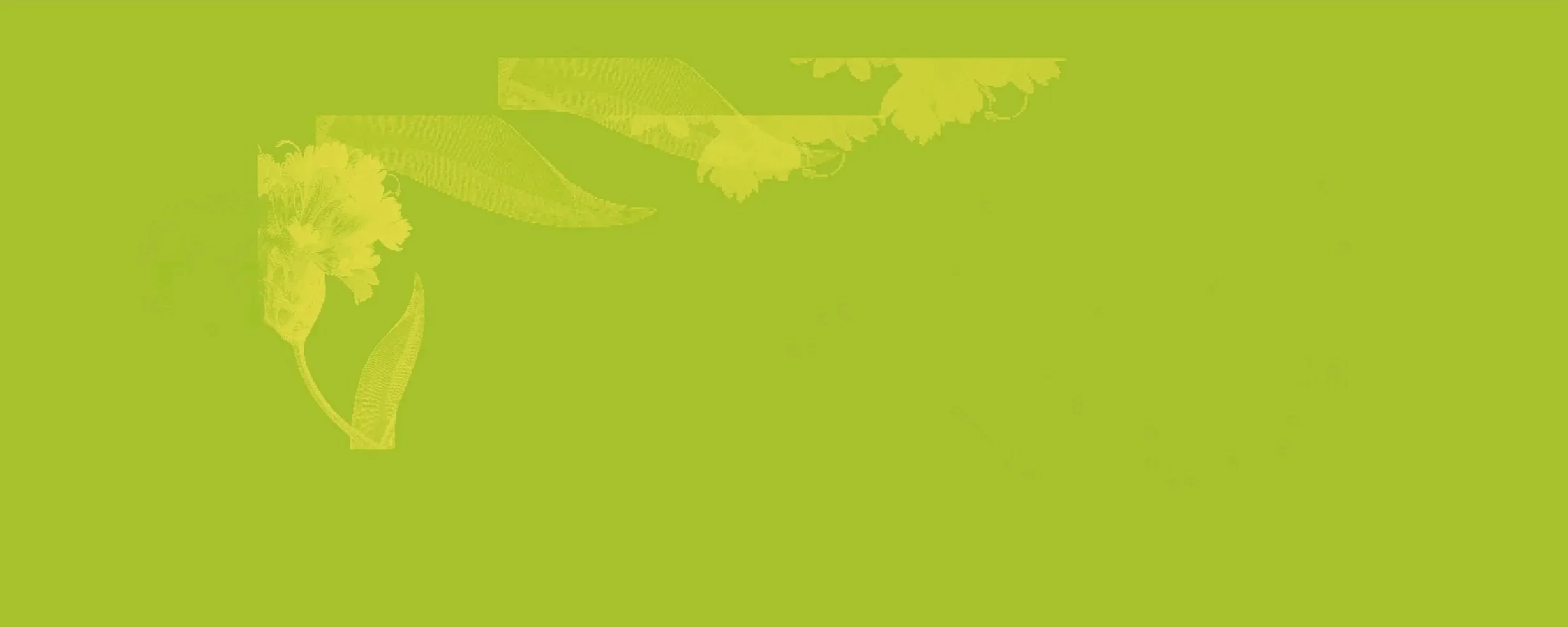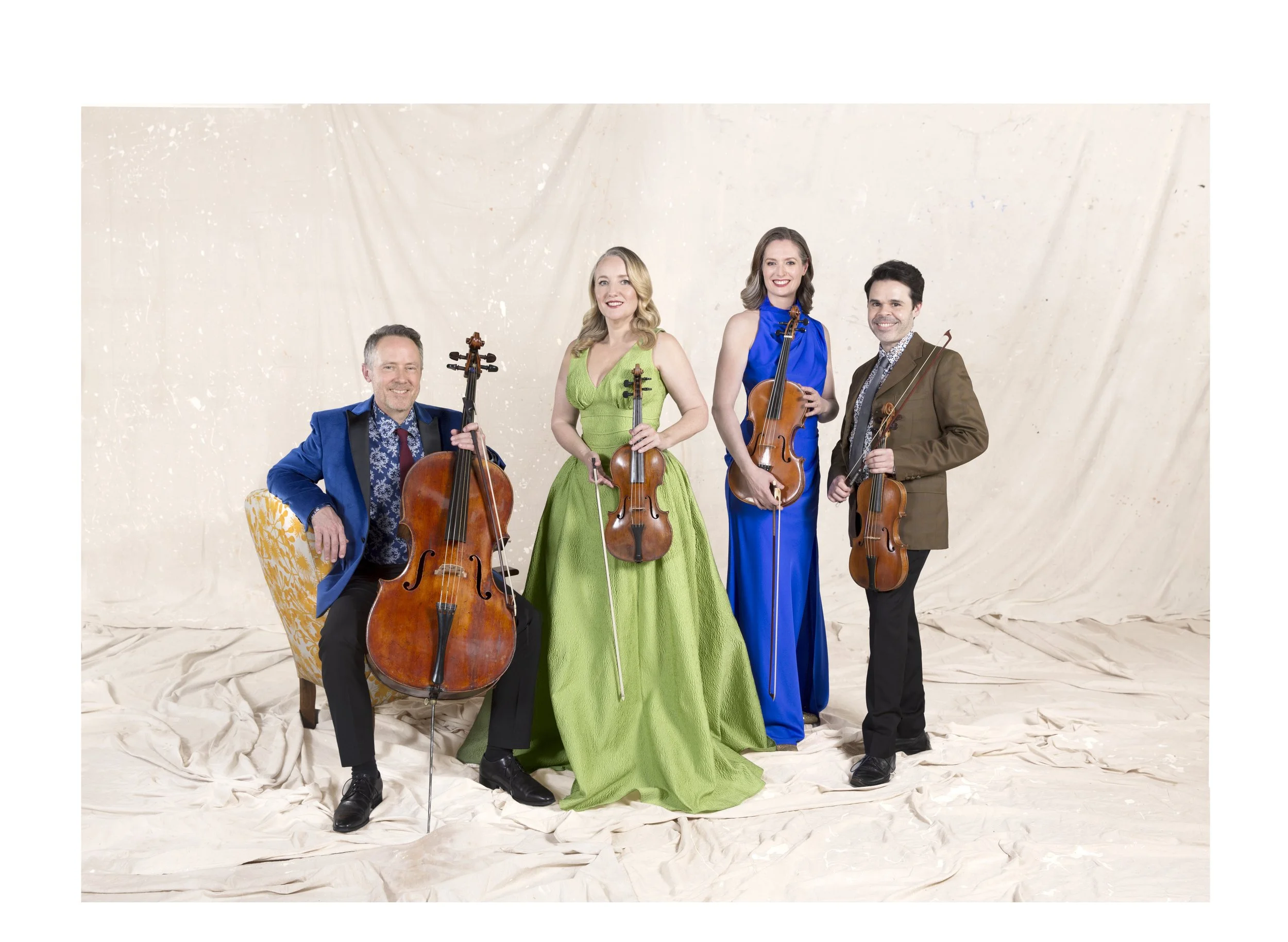
ARTISTS
Skye McIntosh, violin
Matthew Greco, violin
Karina Schmitz, viola
Daniel Yeadon, cello
PROGRAM
HAYDN
String Quartet Op. 33 No. 3 in C major Bird
MENDELSSOHN
String Quartet in E flat major MWV R18
MOZART
String Quartet No. 14 in G major K. 387 Spring
CONCERT DURATION:
Approx 120 minutes with a 20 minute interval
ABOUT THIS CONCERT
Haydn, Mozart & Mendelssohn
Leave your scarves at home. For their opening concert of 2026 the Ensemble have decided to bypass Autumn and Winter and let you balmily bathe in sublime sunshine.
We don’t know who christened it Spring but Mozart’s String Quartet No. 14 K. 387 is so fresh you can almost smell the cut clover. The G (for green) major first movement teems with tunes: all four players toss them playfully at each other and, just when you think Mozart’s hooks can’t keep coming, he adds the sweetest little skipping phrase, like a lover impulsively returning for another embrace. Across the other movements, the tears that well during his brief shadowy sojourns are quickly turned to those of joy. The finale, which manages to meld sonata form with a double fugue (!) is so infectiously happy it brings to mind a supremely gifted student dashing off a counterpoint assignment so he can get to a party.
Wolfgang was a wise 28 year old when this quartet was published. To think that Felix Mendelssohn was only 14 when his very much un-published Quartet in E flat MWV R18 was penned, strains all credulity. In maturity it dwarfs even the most precocious efforts of Mozart’s early teens. Not the Eb known as Op. 12 “No. 1”, this quartet, more like his “minus 1”, is rarely heard, but if you haven’t, you’ll think you have: its movements seem to have dropped into being perfectly formed. That’s especially true of the haunting song-without-words-Adagio. Haven’t these melodies always existed? And if its fugal finale tries a bit too hard, what precedes it makes you just want to marvel all the more and bless this wunderkind’s little socks.
Haydn’s chirpy and charming Op. 33 No. 3 is nicknamed in honour of the unidentified bird who twitters throughout the first movement, but it also features a spirited à la russe finale to do in the thighs of its dedicatee (Catherine the Great’s errant son Paul), a glowing and lovely Adagio, and a second movement that’s bizarre even by Haydn’s standards: the Scherzo’s pompous, wheezy old gentleman is scandalously partnered with a sprightly and shrill Trio many years his junior. Well may we wonder at whom Haydn was flipping his bird.

PERFORMANCES & TICKETS
Sunday 8 March, 4pm
Sydney
The Paintings Galleries,
State Library of NSW
18th Century Unpacked - 1
Thursday 5 March, 6pm
Sydney, NSW
The Friends Room,
State Library of NSW
Thursday 12 March, 7pm
Canberra
Gandel Hall,
National Gallery of Australia









DEEP DIVE
Learn more about the Composers and Music in this performance from the following links:

AHE SPOTIFY PLAYLIST
Listen to further selections from the program on our spotify playlist.

CONCERTS 101: WHAT TO EXPECT
First time attending a concert and not sure what to expect? Don’t worry! Scroll down to find out about attending an AHE concert. If you have questions that you don’t see the answer to here, send us an email and we’d be happy to help. Contact one of our friendly team at: info@australianhaydn.com.au
-
Firstly, you should know there are no rules. Going to a concert can be a great time to glam it up. If that feels right, then go ahead – there’ll almost certainly be plenty of others dressing up.
It’s also totally fine to come in jeans – and plenty of people do. The only real “rule” is to wear something that’s comfortable.
-
Don’t worry – nobody is going to get into trouble for clapping in the “wrong” place. The only real rule is not to clap while the musicians are actually playing (as other people can’t hear them).
The thing to know is that applause conventions have changed over time. People used to talk all the way through the opera in the 1700s, and we don’t tend to do that now!
At AHE, the music we play will often come to the end of a section (known as a movement) with what feels like a ‘big finish’. It’s like the composer is begging you to respond. And in days of old, they may well have shouted or clapped or cheered at that point!
When that happens, and you “accidentally” clap and not many others do, you have done nothing wrong! Just sit back and let it all sink in. You may still feel the vibration of the music in the air, and it can be quite a magical moment.
The performers will be getting ready for the next movement, which may have a very different feel to it. That’s all part of the journey of the piece as a whole.
Think of it like a book, with each movement like a chapter. You save your Goodreads five-star review for the end – and that has now become the convention for clapping at concerts.
At the end of the work, there will once again be a lovely pause while the final notes die away.
Watch for the body language of the players and let that be your guide. The majority of people around you may also start clapping too – so that’s always a good sign to let go and express yourself.
You don’t have to hold back at all now! Feel free to clap as loud and long as you like, cheer or you can even stamp your feet on the floor while you are still seated if you really loved it!
Sometimes you’ll see people standing up and clapping too (called a standing ovation). You don’t have to do this, but when and if you do, just know that it’s the highest honour an audience can give the musicians and a sign of maximum appreciation.
Most of all – listen and enjoy!
-
Each performance has a detailed concert program that explains the history of the composers, the music and provides information about the musicians.
You can pick up a concert program at the performance or read it online a few weeks before the concert. Once, available, we upload it to our Concert Programs page and include it on the event page (above)
We also try to provide information about the music in the lead up to a concert on our website, social channels and via emails.
In our ‘Deep Dive’ section (also on this page for each concert), you will find links to various background information pages that will help to give you more insight into the works and composers on the program.
Be sure you have opted in to receive emails so that you get all the info.
-
Yes, depending on the venue. The availability of refreshments varies from venue to venue and changes from time to time.
Below is information about what is currently available at our own venues.
BERRY: In Berry, we have community-led catering which usually includes tea and coffee, wine, cakes and snacks served by our wonderful local supporters.
BOWRAL MEMORIAL HALL: Delicious pre-concert and interval homemade treats are provided by the CWA. Alcohol is not currently available. There are gluten-free options and you can pay by cash or card.
BURRAWANG, SCHOOL OF ARTS: In Burrawang, we have gorgeous community-led catering which usually includes tea and coffee, wine and snacks served by the wonderful hall committee.
CANBERRA: Wesley Music Centre. Interval tea and coffee is on the cards for this venue in the future!
CITY RECITAL HALL: In Sydney, the City Recital Hall operates a full service bar before the concert and at interval. You can even take your drink inside the concert! Note that the City Recital Hall is a cashless bar. More information on all the dining options and bars is available here.
LAKE MACQUARIE: Tea and coffee, wine and snacks available.
PORT MACQUARE: Tea, coffee and wine available.
-
Between pieces definitely. Our instruments aren’t amplified so we ask you to respect everyone’s experience and that you don’t talk whilst the musicians are playing.
-
Photos are fine between pieces and when the musicians are bowing at the end of pieces, provided the flash is off.
Our musicians are concentrating hard whilst they are performing though, so we ask that your phone is off and away during the performance itself.










